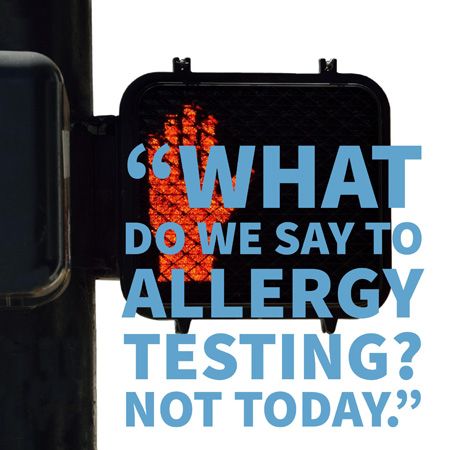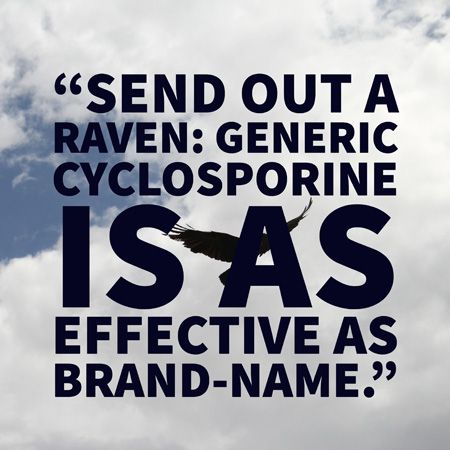A song of fire and itch: Veterinary dermatologic variations on Game of Thrones
What better way to find out the latest derm updates to rescue your patients than by correlating them to the hottest series on TV?!
At a recent CVC, Anthea E. Schick, DVM, DACVD, shared the latest research findings from the 2017 North American Dermatology Forum that every private practitioner needs to know. In honor of the seventh season of the best show on TV (IMHO), I've spiced up the tips with variations on quotes from the Game of Thrones. Whoever guesses the right episode for each quote in the comments wins some Valyrian steel.

"The treatment stopped working." "You know nothing, Mr. Snow." (Image assembled in Adobe Spark)
Brace yourselves: itching is coming
Question: How does scabies make dogs itch?
(Hint: it's not the bites!)
Answer: Pruritus associated with scabies is caused by an allergic reaction to mite poop. That is why it takes longer for the itch to go down after you have treated a patient. Bathing the dog with a medicated shampoo a couple of times during treatment removes mite droppings and manages itch.
One of the most common complaints from irate owners of atopic dogs is that the expensive treatment that you prescribed stopped working, whether oclacitinib (Apoquel-Zoetis), monoclonal antibody therapy (Cytopoint-Zoetis) or cyclosporine (Atopica-Novartis). This is simply not the case, says Dr. Schick. What has happened is that the patient's pruritus is due to something else, such as flea allergy dermatitis, mites or a concurrent bacterial or fungal infection. Manage client expectations from the get-go to avoid these confrontations, and explain clearly that these drugs manage but do not cure skin allergies. If the dog stops responding to the medication, there is something else going on that requires your attention.

"A veterinarian always scrapes his itchy patients." (Image assembled in Adobe Spark)So you can draw from an unblemished reputation, Dr. Schick recommends always scraping pruritic patients-even on rechecks. Cytologic examination of skin scrapes, impression smears or tape preps gives you information you need to best manage the patient. No time for scraping or cytology? Dr. Schick recommends training your technicians! They are waiting for opportunities to learn and grow. By training them on where and how to collect samples and how to evaluate the samples, you save time and are able to see more patients.

"I demand a trial by parasiticide." (Image assembled in Adobe Spark)Atopy is a diagnosis of exclusion-only after you have ruled out everything else can you diagnose atopy. Because it lasts three months, even one dose of fluralaner (Bravecto-Merck) will rule out scabies and demodicosis in most patients. Dr. Schick finds fluralaner useful when she is starting a parasite treatment trial and a food trial because she only needs to give one dose, which won't interfere with the diet trial. Another parasiticide option is selamectin (Revolution-Zoetis) applied every other week for three treatments. Treat the itchy dog as well as all the other dogs in the household.
Dr. Schick thinks fluralaner is a game-changer for demodicosis. The old treatment recommendation was one treatment every two months, but the new recommendation is one treatment every three months. For older patients with chronic demodicosis, Dr. Schick recommends long-term maintenance with fluralaner every three months. She says a study that will be published soon shows that fluralaner can reduce the incidence of demodicosis in litters of bitches that have a history of litters infected with Demodex species. The bitches were given one dose 10 days before mating and a second dose three months later, and all dogs except one had Demodex-free litters.
The isoxazolines are safe for ivermectin-sensitive breeds. Sarolaner (Simparica-Zoetis) is approved for fleas and ticks and lasts 35 days, and afoxolaner (NexGard-Merial) is approved for use in puppies 8 weeks or older.

"What do we say to allergy testing? Not today." (Image assembled in Adobe Spark)A client may be interested in pursuing allergy testing for immunotherapy treatment, but if the patient is being treated with corticosteroids or antihistamines then you must wait-two weeks for antihistamines, one month for corticosteroids. Dr. Schick shares the good news: There is no withdrawal period required for Atopica, Apoquel or Cytopoint, and you do not have to discontinue the drugs. Clients will appreciate that their dogs don't have to suffer through withdrawal periods any more.
Speaking of allergy testing, are any of your clients coming in with hair and saliva testing kits that they bought off of Groupon? Dr. Schick ran her own study on those kits. She sent in 10 samples from real dogs and five fake samples-all the samples came back positive, even the fake cat hair off a costume. She is in the process of getting the study published, so stay tuned, and tell your clients that there is research coming that proves what you already know: those kits don't work.
Dr. Schick also reminds us that allergy testing is not used to diagnose atopy but to simply determine the recipe for the allergy serum. The recipe needed for an individual patient can change over time, she says, so pay attention to pollen counts when you are choosing which allergens to include in the serum. When it comes to the best tests for the money, Allercept (Heska) blood tests are very specific but have low sensitivity and can lead to false negative results. Dr. Schick recommends skin prick testing over blood testing.

"Send out a raven: generic cyclosporine is as effective as brand-name." (Image assembled in Adobe Spark)That's right, generic modified microemulsion cyclosporine has been proven to be bioequivalent to the brand name.1 Costco has a great price on generic modified cyclosporine, Dr. Schick says, and if your clients are still struggling with cost, adding 2.5 mg/kg ketoconazole will approximately double serum concentrations of cyclosporine, which is great for big dogs.
Compounded cyclosporine, on the other hand, is still not as reliable in absorption or dosage, Dr. Schick cautions. While the cyclosporine compounded into capsules has somewhat reliable dosage, there have been significant dosage problems with compounded liquid cyclosporine.
When it comes to dealing with side effects from chronic cyclosporine administration, Dr. Schick says that azithromycin toothpaste can help with gingival hyperplasia. Cyclosporine can cause occult urinary tract infections in both male and female dogs. Dr. Schick recommends monitoring canine patients receiving long-term cyclosporine with yearly urinalyses and cultures.
Cats can do really well on cyclosporine, but absorption is variable, Dr. Schick says. The good news is that cats receiving it long-term do not get occult urinary tract infections. There are a couple of side effects to warn clients about, however. If a cat that has high rates of cyclosporine absorption is exposed to Toxoplasma species, it may be fatal. Let your owners know, offer to do a Toxoplasma screen before starting medication, and keep cats on cyclosporine indoors only. Cyclosporine can also cause unexplained weight loss in cats, though this side effect is rare.

"For the night is dark and full of itches." (Image assembled in Adobe Spark)First the good news about Apoquel-it does not affect intradermal skin test or Allercept serologic test results.
The bad news-after abrupt withdrawal of Apoquel, dogs demonstrate pruritus that is more intense than before they started the drug. This phenomenon has been studied in mice2 and it appears that the intensified pruritus is due to an increase in pruritogenic cytokines and fast peripheral sensitization, Dr. Schick says.
Clinically, I have noticed (and you have probably noticed as well) that when I decrease patients to a once-daily maintenance dose of Apoquel, there is an increase in itching. Here are several solutions you can try:
• Advise giving Apoquel in the morning and diphenhydramine at night.
• Split the maintenance dose into twice-a-day administration.
• Push the maintenance dose closer to 0.6 mg/kg.
Dr. Schick says those “put out the fire doses” of twice-daily Apoquel for one to three days a month are OK if needed for breakthrough itching.
Bloodwork is recommended every six months for patients receiving Apoquel, and Dr. Schick says papilloma viral flare-ups, an increase in the prevalence of benign skin tumors (histiocytomas), and low albumin concentrations are among the side effects to monitor.
Apoquel is being used (extralabel) successfully to treat acral lick granulomas in dogs, and it is also being used for atopy in cats. The dosage for cats is 0.6 mg/kg, Dr. Schick says, but warn the owner of the possibility of demodicosis, based on her experience as well as conversations with other veterinary dermatologists.

"Hold the drugs ... Hold drugs ... Hodrugs." (Image assembled in Adobe Spark)White walkers are real, and so is antibiotic-resistant bacteria. And you've got a dog with pyoderma in exam room 1. Current recommendations from the North American Veterinary Dermatology Forum are to use cephalexin, clindamycin, augmentin and trimethoprim sulfamethoxazole as first-tier antibiotics. If the pyoderma does not respond, perform a culture before switching to a second-tier antibiotic. Avoid fluoroquinolones unless absolutely necessary-they speed up the rate of multidrug resistance in Staphylococcus species, and ciprofloxacin has a wide variability in absorption in dogs. Don't use fluoroquinolones without culture results and unless absolutely necessary.
Rifampin is effective as a single agent against staphylococcal infections, and 5 mg/kg is shown to be effective clinically, which is lower than what is reported the literature. Dr. Schick recommends keeping the dosage below 10 mg/kg to avoid gastrointestinal side effects.

"You are a veterinarian, first of your name, healer of itchy skin, mother of mites, and user of supportive therapies." (Image assembled in Adobe Spark)In patients with pyoderma or a high bacterial load on their skin, Dr. Schick strongly recommends the use of supportive therapies, such as bathing, to reduce the bacterial load. Chlorhexidine is still an efficacious topical, but for dogs that are sensitive to chlorhexidine, Dr. Schick recommends rinsing the dog in bleach. She warns that you will definitely get some funny looks from owners. Studies show that 0.005% bleach dilution is not toxic to epithelial cells and has a good effect on even drug-resistant Staphylococcus species.3 Bleach is light-sensitive, so owners must make it fresh every time, and the dilution she recommends is one-third of a cup Clorox bleach to a gallon of water. Generic bleach is not consistent in dilution, so use the brand name Clorox. It does not need to be rinsed off. Dr. Schick says leave it on.
References
1. Navarro C, Séguy L, Vlia M, et al. Bioequivalence study between two formulations of ciclosporin A (Cyclavance oral solution and Atopica soft capsules) following a single oral administration to dogs. BMC Vet Res 2016;12:54.
2. Fukuyama T, Ganchingco JR, Bäumer W. Demonstration of rebound phenomenon following abrupt withdrawal of the JAK1 inhibitor oclacitinib. Eur J Pharmacol 2017;794:20-26.
3. Pariser M, Gard S, Schmeitzel L. An in vitro study to determine the minimal bactericidal concentration of sodium hypochlorite (bleach) required to inhibit meticillin-resistant Staphylococcus pseudintermedius strains isolated from canine skin. Vet Dermatol 2013;24:632-634.
Dr. Sarah Wooten graduated from UC Davis School of Veterinary Medicine in 2002. A member of the American Society of Veterinary Journalists, Dr. Wooten divides her professional time between small animal practice in Greeley, Colorado, public speaking on associate issues, leadership, and client communication, and writing. She enjoys camping with her family, skiing, SCUBA, and participating in triathlons.